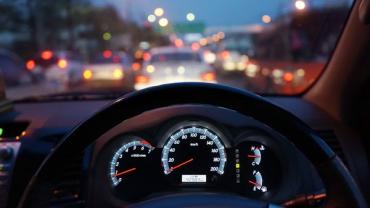
Public awareness campaigns regarding drunk driving have led to a significant reduction in fatalities from drunk driving incidents. The organization Mothers Against Drunk Driving (MADD) estimates that deaths related to drunk driving have decreased nearly 55% since its founding in 1980. Nearly everyone understands by now that it’s a terrible idea (not to mention a crime) to get behind the wheel when they’re under the influence. But what about when they’re sleepy? Research indicates that driving while drowsy is just as dangerous as driving while intoxicated, but many people don’t think twice about getting on the road when they’re yawning and their eyelids are dropping. Let’s take a closer look DWD: driving while drowsy.
According to the American Automobile Association (AAA, the members-only organization that helps when you lock your keys in the car or have a dead battery in the middle of nowhere), an estimated 16.5 percent of fatal crashes (1 in 6) and 13 percent (1 in 8) of crashes resulting in hospitalization involve a drowsy driver. Data from 2008 showed that 32 percent of motor vehicle crash fatalities involved an alcohol-impaired driver and 31 percent involved a speeding driver. Data from 2002 from the National Highway Traffic Safety Administration (NHTSA) showed that drowsy driving was right up there: 37% of drivers reported having fallen asleep or nodded off at some point while driving “even for a moment.” NHTSA also documented that about 100,000 police-reported crashes involve drowsy driving resulting in more than 1500 fatalities and 71,000 injuries annually.
These are not small numbers! Between 2009 and 2013 there were over 72,000 police-reported crashes involving tired drivers, and drowsy driving is believed to be under-reported, so the true figure may be even higher. As opposed to drunk driving, only two states (New Jersey and Arkansas) have laws addressing drowsy driving at the time of this writing.
In their fact sheet on drowsy driving, AAA notes that younger drivers (age 16-24) are nearly twice as likely to be involved in a drowsy driving crash as drivers age 40-59. (A previous DFH article looked at the connection between sleep debt and obesity among teenagers, but carrying some extra body weight is nothing compared to getting killed behind the wheel or killing someone else because of sleepiness.)
Here are some of the most alarming statistics:
Driving for long distances or for many hours isn’t a prerequisite for falling asleep while driving. More than half the people who reported falling asleep while driving said they had been driving for less than an hour before falling asleep—only one in five reported they’d been driving for three or more hours. (If you do drive long distances, though, AAA recommends taking a break every two hours or 100 miles.) And time of day isn’t always a factor either. You might assume these dangerous incidents happen exclusively in the middle of the night, but of the people who reported having falling asleep while driving in the past year, more than one in 4 drivers (26%) said it occurred between noon and 5pm.
According to the National Safety Council, driving after going more than 20 hours without sleep is the equivalent of driving with a blood alcohol concentration of 0.08%, which is the US legal limit. This is not something to be taken lightly. Cars now come equipped with technology to keep drivers hands-free while texting, but less attention is given to ensuring drivers are alert. Opening the windows can help, but this may not always be possible depending on the weather. The radio can help, too, as long as nobody chooses music that makes them even sleepier!
When possible, it’s best to simply delay your trip if you’re especially tired. Spring for an extra night in the hotel; ask your host if you can stay one more night or take a catnap. If you absolutely have to get behind the wheel, consider keeping some supplements on hand that can help promote energy and alertness, such as B-vitamins. Products containing medium-chain triglycerides (MCTs) or exogenous ketones may also be helpful since ketones are a quick-acting fuel for the brain. And of course, there’s the old standby, caffeine. Keep in mind, though, that it can take about 30 minutes for caffeine to take effect, so don’t think you can chug a cup of java and get right back on the road. Don’t hesitate to use caffeine even if it’s late at night and you plan to go to sleep as soon as you arrive at your destination: better to risk being a little keyed up when you get there if it means you arrive alive.
We put so much focus on healthy diets, quality supplements, exercise and other aspects of a health-promoting lifestyle, but all of that is for naught if we ignore our fundamental need for appropriate quantity and quality of sleep to the point that we risk becoming a hazard to ourselves and others. Don’t be a hero: the driver’s seat of a car isn’t the place to test your limits.